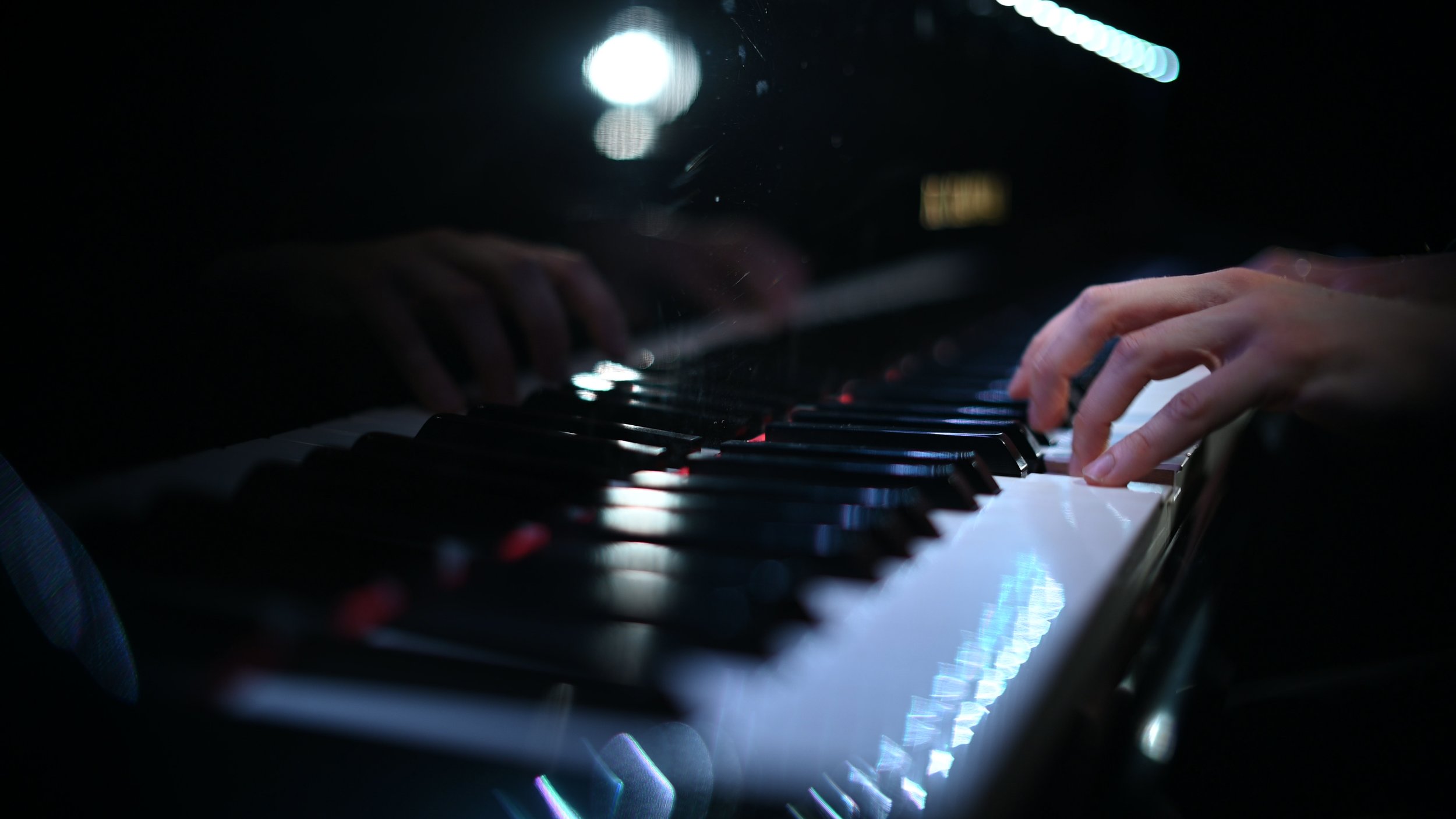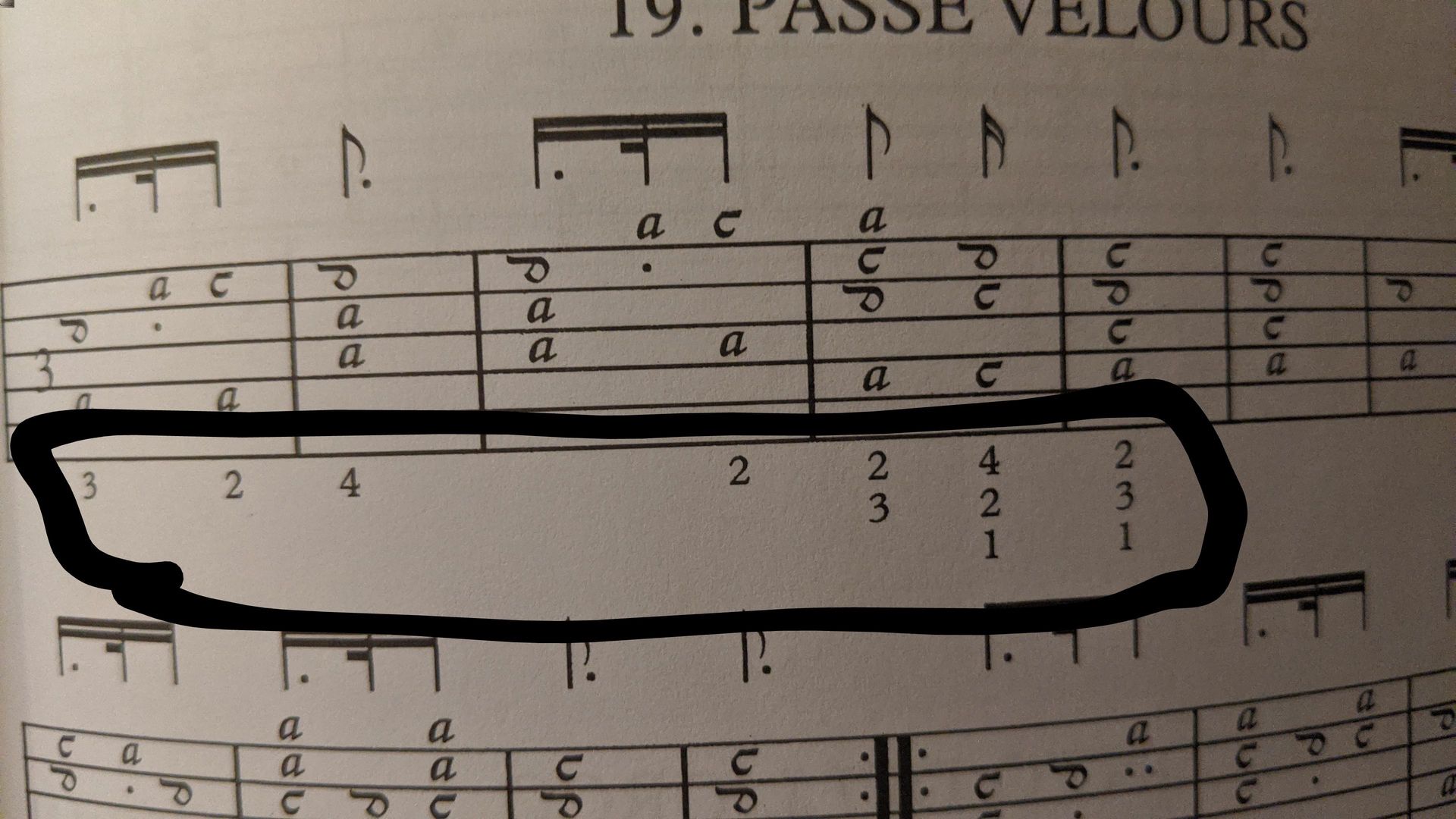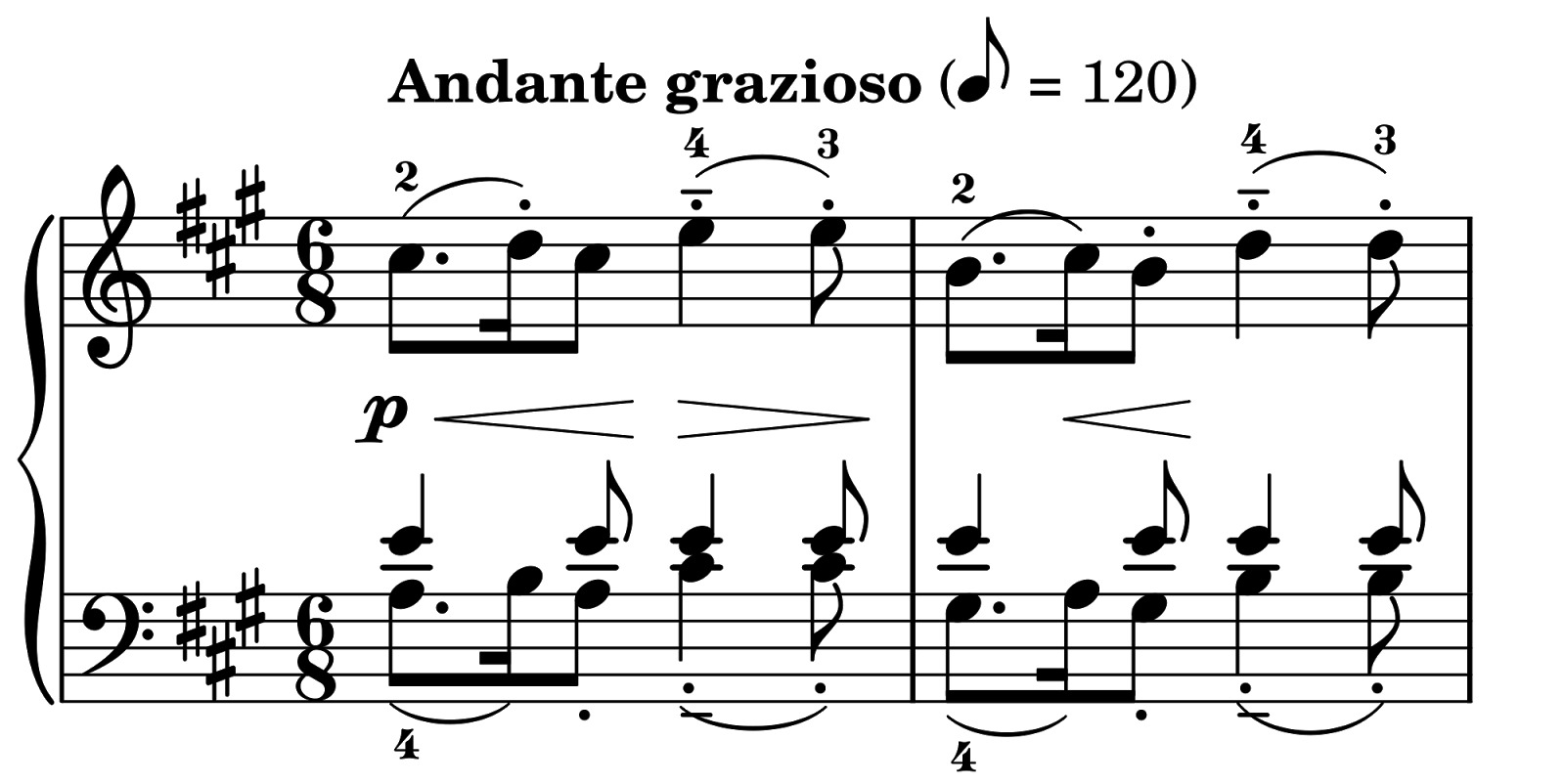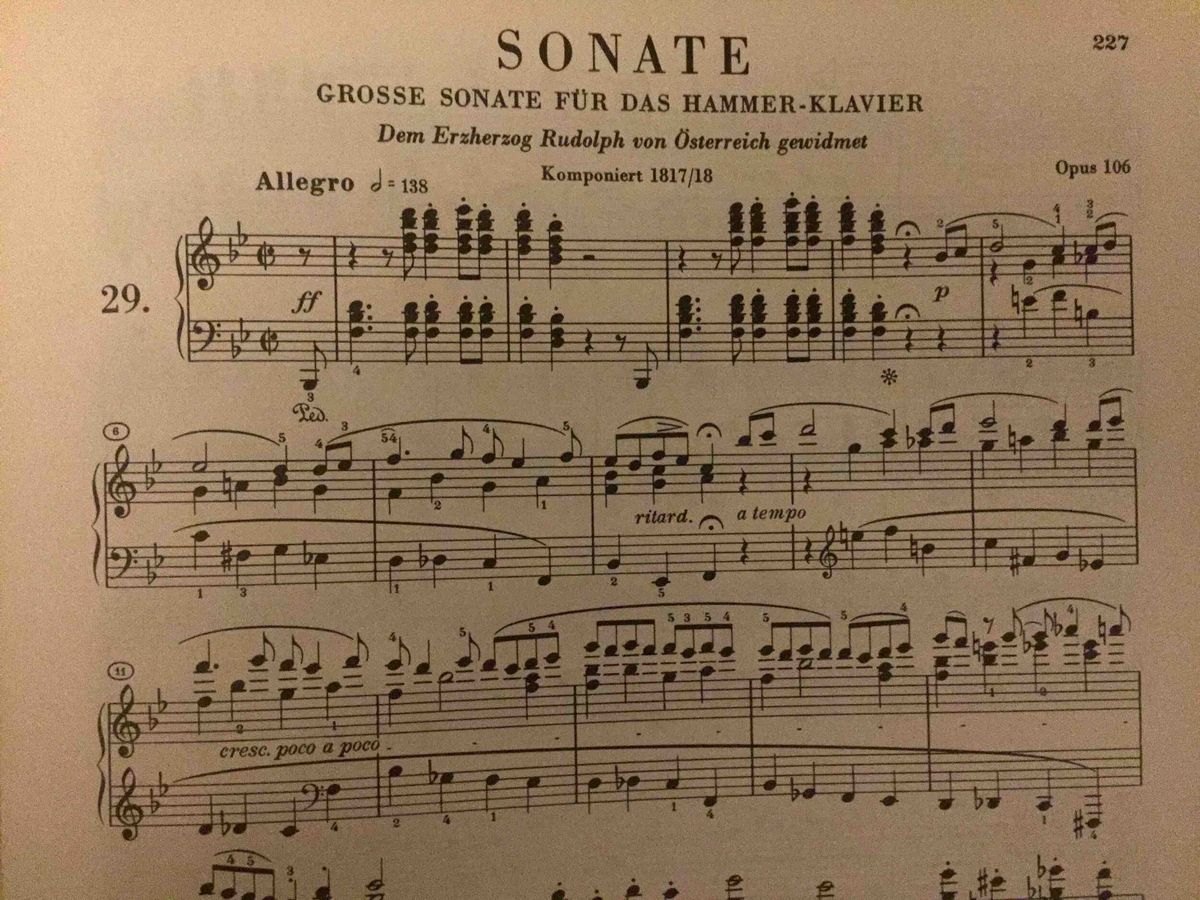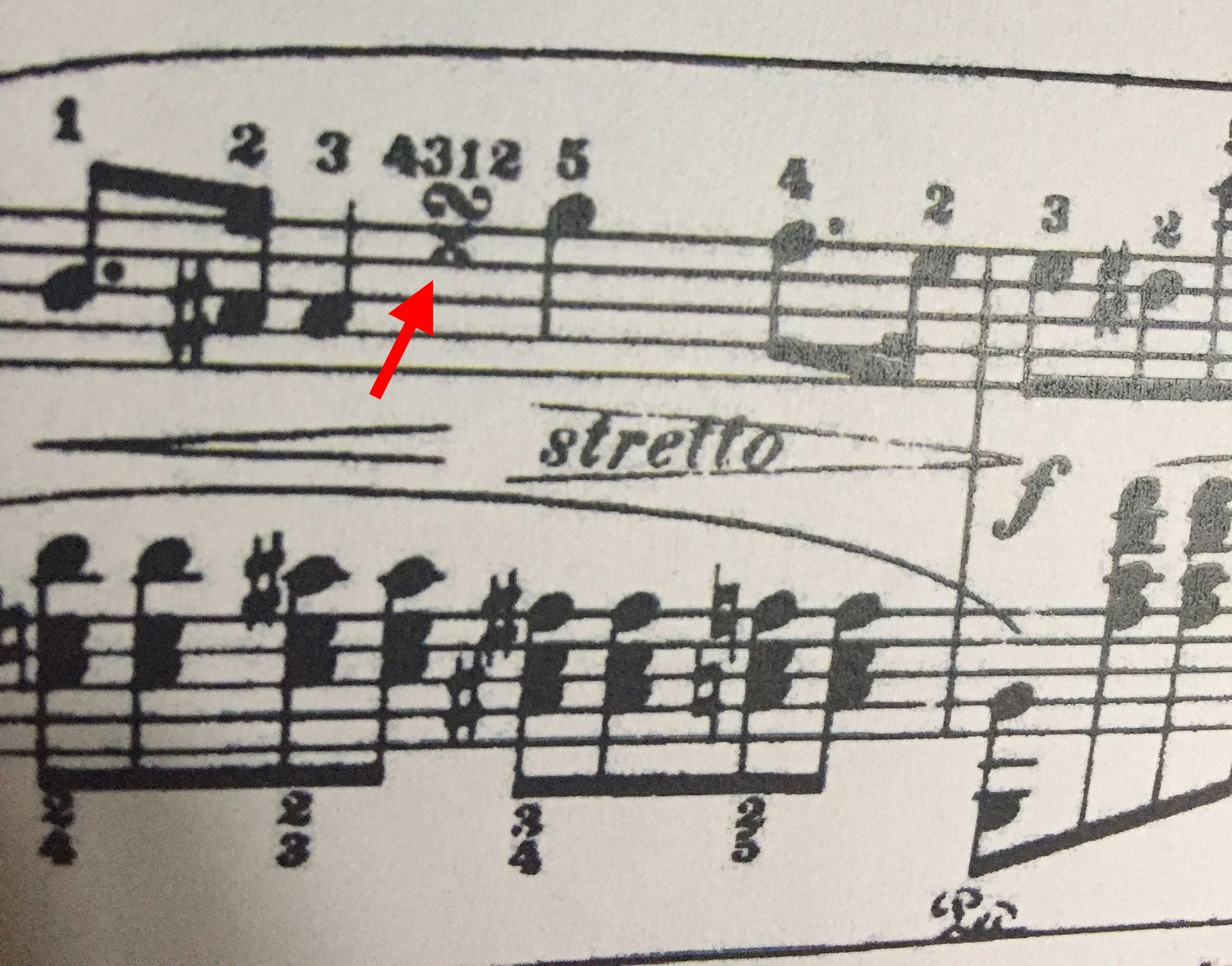Home>Production & Technology>Tempo>What Does A Tempo Mean In Sheet Music


Tempo
What Does A Tempo Mean In Sheet Music
Modified: January 22, 2024
Discover the meaning of "tempo" in sheet music and how it influences the pace and rhythm of your musical performance. Master the art of tempo with expert tips and guidance.
(Many of the links in this article redirect to a specific reviewed product. Your purchase of these products through affiliate links helps to generate commission for AudioLover.com, at no extra cost. Learn more)
Table of Contents
Introduction
In the world of sheet music, tempo plays a crucial role in guiding musicians on how to perform a musical piece. Tempo refers to the speed or pace at which a composition should be played, and it greatly influences the overall mood and character of the music. Understanding tempo and its various nuances is essential for musicians who strive to accurately convey the composer’s intentions.
Tempo is indicated in sheet music by tempo markings, which are specific instructions written above the staff. These markings provide a standardized way to communicate the desired tempo to the performers. While tempo markings are typically written in Italian terms, they can also be expressed in other languages or as relative terms.
Interpreting and executing tempo correctly requires both technical knowledge and artistic sensibility. Musicians need to be aware of the various tempo markings and their meanings to accurately convey the composer’s vision. Additionally, they must consider how to indicate tempo changes within a piece and how to adapt their playing style accordingly.
In this article, we will explore the world of tempo in sheet music. We will delve into the different tempo markings and their meanings, discuss techniques for indicating tempo in sheet music, and explore strategies for interpreting tempo in performance. By the end, you will have a comprehensive understanding of what a tempo signifies in sheet music, and how to effectively incorporate it into your musical performance.
Understanding Tempo in Sheet Music
Tempo is a fundamental element of music that governs the speed and rhythm of a composition. It is an essential component in conveying the intended mood, energy, and emotion of a musical piece. By understanding tempo and its impact, musicians can effectively interpret and perform sheet music.
Tempo is indicated at the beginning of a piece and can sometimes change throughout the composition. It is often conveyed through tempo markings, which provide a clear and concise instruction for the desired speed. These markings can be written in Italian terms such as “Largo” (slow), “Andante” (walking pace), or “Presto” (very fast), among others.
When interpreting tempo markings, it is important to consider both the numerical value associated with the marking and the subjective nature of tempo. For example, a marking of “120 BPM” (beats per minute) indicates a specific speed, but the overall feeling and interpretation of that speed can vary depending on the musician and the musical context.
In addition to the precise markings, composers may also include descriptive terms to convey the desired mood or character of the music. For example, a piece may have a tempo marking of “Allegro con brio” (fast with energy), suggesting a lively and spirited performance.
Understanding tempo goes beyond simply adhering to a specific speed. It requires a deep appreciation for the composer’s intentions and the ability to convey the desired emotions through rhythm and pacing. Musicians must be able to interpret the tempo markings and breathe life into the music, evoking the intended mood and atmosphere.
Tempo is not solely restricted to the initial indication in sheet music. Throughout a composition, there may be tempo changes that reflect shifts in mood, dynamics, or musical ideas. These changes are indicated by additional markings, such as “ritardando” (gradually slowing down) or “accelerando” (gradually speeding up).
By grasping the nuances of tempo in sheet music, musicians can skillfully navigate the musical landscape and bring out the true essence of a composition. The mastery of tempo allows performers to connect with the composer’s vision and express their own musical interpretation, creating a captivating and engaging experience for audiences.
Tempo Markings and Their Meanings
Tempo markings, written above the staff in sheet music, provide specific instructions for the desired speed and character of a musical piece. These markings are typically written in Italian, although they can be expressed in other languages or as relative terms. Understanding the meanings of tempo markings is crucial for musicians to accurately interpret and perform the music.
Each tempo marking carries its own unique implications and sets the tone for how the piece should be played. Here are some commonly used tempo markings and their meanings:
- Grave: Very slow and solemn, indicating a heavy and serious mood.
- Largo: Broad and slow, creating a spacious and contemplative atmosphere.
- Adagio: Slow and leisurely, conveying a relaxed and expressive feel.
- Andante: Walking pace, suggesting a flowing and lyrical performance.
- Allegro: Fast and lively, bringing a sense of energy and vigor to the music.
- Presto: Very fast, requiring precision and agility in execution.
These tempo markings serve as a guide for performers, providing a starting point for establishing the tempo of a piece. However, it is important to remember that interpretation of tempo is subjective, and different musicians may approach a tempo marking with slight variations.
In addition to these specific tempo markings, composers may also include descriptive terms to further convey the intended character or mood of the music. For example, “dolce” (sweetly), “agitato” (agitated), or “rubato” (flexible tempo) can add additional layers of expression to the interpretation.
It is worth noting that tempo markings are not always accompanied by numerical values. In such cases, performers have greater flexibility in determining the exact tempo, allowing for a more interpretative approach. However, in modern sheet music, it has become common to include metronome markings alongside tempo indications to provide a precise tempo in beats per minute (BPM).
Understanding the nuances of tempo markings and their meanings is essential for musicians to accurately convey the intended mood and character of a musical piece. By immersing themselves in the spirit of the tempo markings, performers can breathe life into the music and create a captivating experience for both themselves and their audiences.
Common Tempo Markings
Tempo markings are essential tools in sheet music that allow composers to communicate specific instructions to performers regarding the desired speed and character of a musical composition. While there are countless tempo markings, some are more commonly used and widely recognized in the musical world. Understanding these common tempo markings is crucial for musicians to accurately interpret and perform a piece of music.
Here are some of the most frequently encountered tempo markings:
- Adagio: A slow tempo that is often described as gentle and flowing.
- Andante: A moderate tempo that suggests a walking pace, creating a lyrical and expressive feel.
- Allegro: A fast and lively tempo, bringing energy and excitement to the music.
- Vivace: A very fast tempo, often associated with a joyful and spirited character.
- Largo: A very slow and broad tempo, evoking a sense of grandeur and solemnity.
- Presto: An extremely fast tempo, demanding technical proficiency and agility from performers.
- Moderato: A moderate tempo that strikes a balance between slow and fast, ensuring a steady and controlled performance.
These common tempo markings provide a framework for musicians to interpret and execute the music appropriately. However, it is important to note that tempo markings are not absolute and can be open to interpretation. Different performers may have slightly different interpretations of the same marking, adding their unique musical expression to the piece.
In addition to these specific tempo markings, composers may also use relative terms to indicate tempo changes within a piece. For example, “ritardando” (gradually slowing down) and “accelerando” (gradually speeding up) give performers flexibility in adjusting the tempo to convey the desired musical effect.
It is also worth mentioning that tempo markings can sometimes be accompanied by metronome markings. These metronome markings provide a precise tempo in beats per minute (BPM), leaving little room for interpretation. However, even with metronome markings, musicians can still infuse their artistic sensibilities and musical instincts, finding the perfect balance between adhering to the numerical value and delivering an expressive performance.
By familiarizing themselves with these common tempo markings, musicians gain a solid foundation in understanding and interpreting the tempo indications in sheet music. They can then apply their knowledge and artistic sensibilities to bring life and depth to the music they perform.
How to Indicate Tempo in Sheet Music
Indicating the desired tempo in sheet music is crucial for musicians to accurately interpret and perform a musical piece. Tempo indications provide guidance on the speed and character of the music, allowing performers to bring the composer’s vision to life. Here are some common methods used to indicate tempo in sheet music:
1. Tempo Markings: The most common and straightforward way to indicate tempo is through tempo markings. These markings, usually written in Italian, provide specific instructions on the desired speed and character of the music. Examples include “Adagio,” “Andante,” or “Allegro.” Tempo markings can be written above the staff or within the music score, indicating the desired tempo at a particular section.
2. Metronome Markings: In addition to tempo markings, composers often include metronome markings in sheet music. Metronome markings indicate the precise tempo in beats per minute (BPM). These markings provide a more concrete numerical reference for the tempo and allow performers to maintain a consistent tempo throughout the piece. They are commonly written at the beginning of the music or at tempo changes within the composition.
3. Relative Terms: Composers may also use relative terms to indicate tempo changes within the piece. Terms like “ritardando” (gradually slowing down) or “accelerando” (gradually speeding up) give performers flexibility in adjusting the tempo to convey the desired musical effect. These terms guide the performer to smoothly transition from one tempo to another, adding dynamic variation and interest to the music.
4. Expressive Terms: Along with precise tempo indications, composers often use expressive terms to convey the desired mood or character of the music. Terms like “dolce” (sweetly), “legato” (smoothly), or “staccato” (short and detached) indicate specific expressive elements that contribute to the overall performance style and interpretation of the music.
5. Metronome: In rehearsal or performance settings, musicians may use a metronome to help maintain a steady tempo. A metronome is a device that generates a regular beat with adjustable speed. It can be set to the desired BPM indicated in the sheet music, ensuring consistency and accuracy in tempo execution.
Overall, indicating tempo in sheet music provides crucial information to performers, allowing them to understand the intended speed and character of the music. By following tempo markings, metronome indications, and expressive terms, musicians can effectively communicate the composer’s vision and deliver a compelling and authentic performance.
Strategies for Interpreting Tempo in Performance
Interpreting tempo in performance is a vital aspect of bringing sheet music to life. It requires musical sensitivity and a deep understanding of the composer’s intentions. Here are some strategies for effectively interpreting tempo in musical performances:
1. Study the Composer’s Intentions: Before diving into a performance, take the time to study the composer’s background, style, and historical context. Understanding the composer’s intentions and the cultural influences of the time can provide valuable insights into the desired tempo and overall interpretation of the music.
2. Internalize the Mood and Character: Tempo markings not only indicate speed but also convey the desired mood and character of the music. Immerse yourself in the emotional essence of the piece, capturing the intended atmosphere and expressing it through the chosen tempo. Reflect on how the tempo contributes to the overall narrative and emotional arc of the composition.
3. Listen to Different Interpretations: Seek out multiple interpretations of the same piece by different performers and ensembles. Listening to a variety of performances can expose you to different approaches to tempo and provide inspiration for your own interpretation. Analyze how different performers use tempo to shape the music and convey their own artistic expression.
4. Experiment with Variation: While tempo markings provide a starting point, do not be afraid to experiment and explore variations within the given parameters. Subtle fluctuations in tempo, known as rubato, can add expressive depth to the performance. Use rubato judiciously to highlight certain phrases or moments, creating a sense of musical freedom and personal expression.
5. Collaborate with Musicians: If performing with a group or ensemble, collaborate with fellow musicians to establish a cohesive interpretation of tempo. Have open discussions about the desired tempo, experimenting with different approaches and finding a collective understanding that serves the music and enhances the overall performance.
6. Consider the Musical Context: Take into account the overall structure and form of the piece when interpreting tempo. Understand how tempo changes occur within larger sections and how they contribute to the musical narrative. Ensure that the transitions between tempos are seamless and coherent, maintaining the flow and musical continuity.
7. Use Body Language and Gesture: As a performer, utilize body language and gesture to convey tempo to fellow musicians or the audience. Clear and precise gestures can help guide the performers throughout the music, ensuring everyone is aligned with the intended tempo and maintaining a unified performance.
Remember, tempo is not a rigid element, and it is subject to interpretation and artistic expression. The key is to balance the composer’s intentions with personal artistic choices, allowing the music to come alive through your unique performance. By employing these strategies, you can effectively interpret tempo and deliver a captivating and engaging musical experience.
Tempo Changes and Interpretations
Tempo changes within a musical composition are essential for conveying different moods, highlighting specific musical passages, and creating musical tension and release. Understanding and effectively interpreting tempo changes is crucial for musicians to bring out the intended musical narrative. Here are some key considerations for navigating tempo changes:
Identify Notated Tempo Changes: Look for explicit indications of tempo changes in the sheet music, such as “ritardando” (gradually slowing down) or “accelerando” (gradually speeding up). These notated changes provide specific instructions from the composer regarding the desired alteration in tempo.
Follow Dynamic Markings and Phrasing: Pay attention to dynamic markings and phrasing in the music, as they often provide hints about the desired tempo changes. Crescendos, decrescendos, and other dynamic markings can imply an increase or decrease in tempo, while phrase markings can suggest a natural ebb and flow of the music.
Consider Musical Context: Evaluate the overall structure, form, and emotional trajectory of the composition to understand how tempo changes contribute to the narrative. Tempo changes can mark shifts in mood, contrasting sections, climactic moments, or transitional passages. Analyzing the musical context will help you make informed decisions about how to interpret and execute the tempo changes.
Use Interpretative Freedom: While it is essential to adhere to the composer’s intentions, tempo changes also provide an opportunity for personal interpretation. Consider your own artistic sensibilities and musical instincts when executing these changes. The goal is to maintain coherence while infusing the music with your own expressive interpretation.
Maintain Musical Continuity: Seamless transitions between tempos are crucial for maintaining a cohesive and engaging performance. Practice the transitions meticulously, ensuring that tempo changes do not disrupt the flow of the music. Pay attention to the timing and phrasing before and after the change to create a smooth and natural musical progression.
Communicate with Fellow Musicians: If performing with a group or ensemble, communication is key when navigating tempo changes. Establish clear cues, gestures, or eye contact to ensure that all musicians are synchronized and aware of the upcoming tempo changes. Collaboration and rehearsal are essential to achieve a cohesive and unified interpretation of the tempo changes.
Expressive Flexibility: While adhering to the notated tempo changes is crucial, allow yourself some expressive flexibility within these changes. Explore nuances in timing, dynamics, and phrasing to bring out the full emotional impact of the music. Use rubato or other expressive techniques to enhance the interpretation, while still honoring the composer’s overall vision.
Interpreting tempo changes requires a combination of technical precision, musical sensitivity, and artistic intuition. By analyzing the notation, understanding the musical context, and staying attuned to the emotional and structural aspects of the composition, musicians can bring out the full depth and impact of the tempo changes, resulting in a captivating and meaningful performance.
Conclusion
Understanding and effectively interpreting tempo in sheet music is essential for musicians to accurately convey the composer’s intentions and create a compelling musical performance. Tempo markings serve as the foundation, providing specific instructions for the desired speed and character of the music. Through careful study and interpretation, musicians can breathe life into the composition, evoking the intended mood and emotion.
From the common tempo markings to the nuances of tempo changes, musicians must navigate a multitude of elements to offer a captivating interpretation. They must internalize the composer’s intentions, study the musical context, and collaborate with fellow musicians to ensure a unified performance.
Interpreting tempo goes beyond adhering to a specific speed. It involves understanding the emotional essence of the music and using artistic flexibility to express its depth. Musicians can experiment with variations, employ expressive techniques, and make thoughtful decisions on when and how to interpret tempo changes within the music.
Ultimately, tempo is a powerful tool for musicians to communicate and connect with audiences. By skillfully interpreting tempo in performance, musicians bring out the nuances, energy, and emotions of the music, creating a truly immersive and memorable musical experience.
As musicians continue to study and master tempo, they deepen their understanding of the composer’s vision and their ability to convey it faithfully. Through practice, collaboration, and a keen artistic sense, musicians can unlock the true potential of tempo in sheet music, making each performance a unique and captivating expression of the composer’s intentions.


